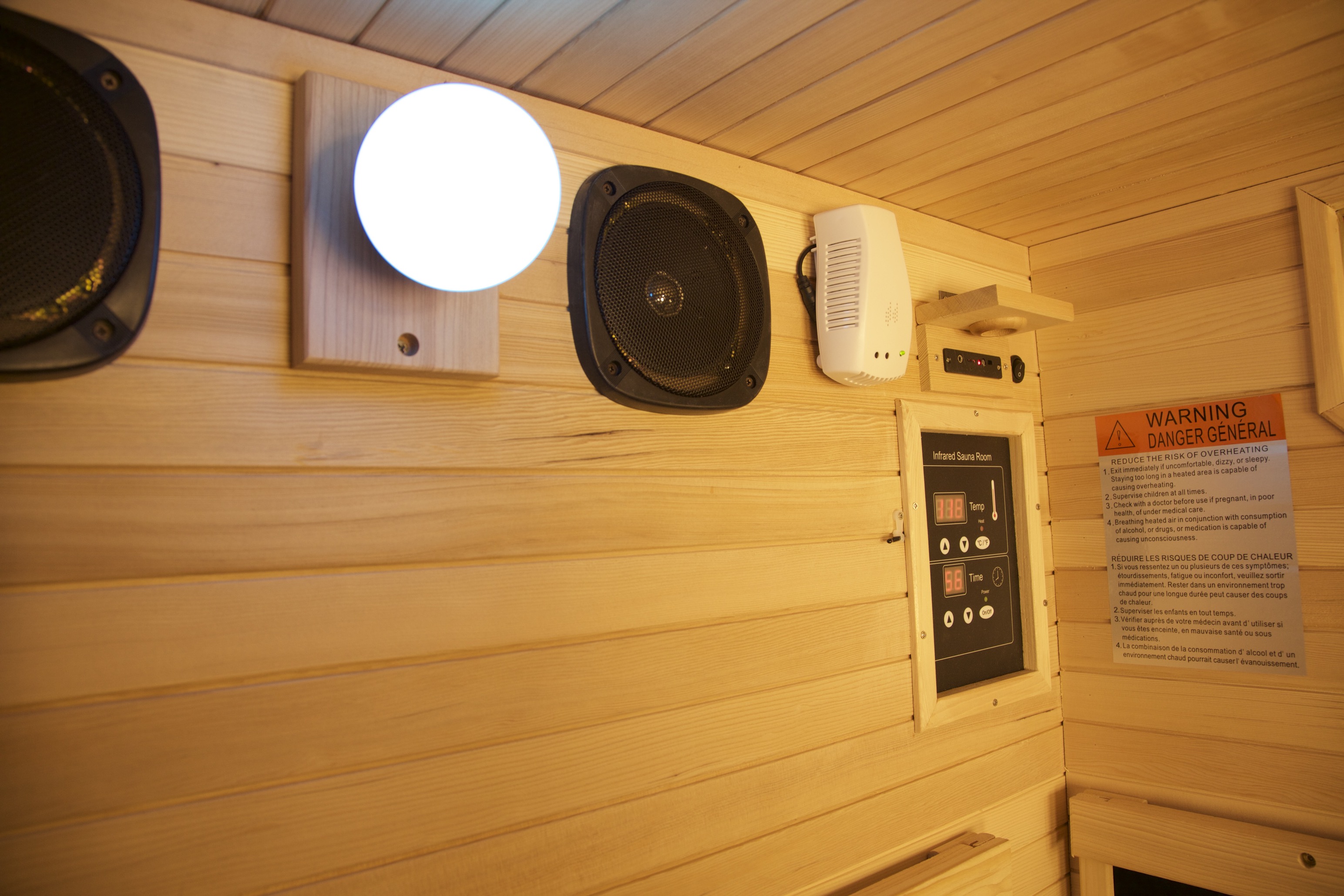The thorough process of researching and buying a sauna can be frustrating and we totally understand that. There are a ton of saunas out there on the market, but how do you know which one is the best for you? With all these options available to you, how do you know the difference between the saunas or which wood is best? How do you know if the warranty is related, how the sauna is made, the difference between heaters, or even if the heaters produce a potentially dangerous level of EMF (electromagnetic field)? There are so many questions that arise and it can feel really overwhelming to decide but this article will give you a breakdown of what you need to know before buying an infrared sauna!
An interesting observation to note if you’re wondering why so many saunas look similar across a variety of websites is that many companies import the containers of the same saunas. Look at the small keyboard to find out which ones are from the same factory!
We have compiled this infrared sauna purchase guide to help answer some of your questions and simplify your search for the perfect sauna for you.
Which infrared heater is best?
When comparing far infrared sauna heaters, you need to look at the size of the heater, the material that generates the infrared heat, the quality of the heat, and the operating temperature of the heater.
The two most commonly used materials for far infrared sauna heaters are ceramic and carbon.
Ceramic is very useful in producing infrared light when exposed to heat. It has a high emissivity rating, which means it provides a lot of infrared heat!
A disadvantage of ceramic heaters is that they tend to produce shorter infrared wavelengths. The body does not easily absorb shorter infrared rays, so the treatment effect is not as efficient as it could be.
In general, carbon infrared heaters produce longer infrared wavelengths. Carbon is very light, so the heater can be more extensive and can operate at lower surface temperatures. These small surface temperatures are what produce the long-wave infrared heat.
Long-wave far-infrared heat is easily absorbed by the body and will produce more desirable results.
A disadvantage of carbon heaters is that they do not produce a large amount of infrared light, although they produce high-quality infrared heat. They also do not shine like ceramic heaters for an aesthetic appeal.
Most companies that use carbon extend the heater to the head area and almost to the ceiling of the sauna to get more heat. In fact, this is a waste of infrared heat because it only heats the air above the head and does not heat the body directly. We also believe that infrared therapy is not recommended to heat the head directly. So, look out for the heat source and its installation!
Which wood is best?
For thousands of years, traditional saunas have been mainly made of dense cedar. Here are some of the several benefits of using a sauna with cedarwood:
1) Cedarwood is a kind of cork that resists cracking and splitting caused by heating and cooling in the sauna. There is no other wood that lasts longer than cedarwood.
2) The cedarwood contains aromatic oils that are known for their healing and cleansing properties which also help detox your body and mind during the sauna. Cedarwood can also help disperse excess fluid throughout the body.
3) Cedarwood has natural antifungal and antibacterial effects due to the unique properties of cedar oil. It is especially important in the sauna because the body, moisture, and heat in the sauna combine to make the environment an ideal place for mold and bacteria to grow if kept unclean.
4) Cedarwood is one of the most beautiful woods, ranging from very light honey to deep walnut wood. Very aesthetic!
5) Cedarwood smells very fragrant and gives you a real sauna experience which helps you relax your mind and dip into your senses. In general, non-aromatic cedar is used in sauna construction, which is very subtle and meets sensory requirements.
6) Cedarwood can be easily sanded in the sauna to remove any stains caused by sweat and bring back a fresh cedar smell.
What is the scope of the warranty? How long is the warranty period?
When buying an infrared sauna, it is essential to understand why the lifetime warranty for the entire sauna is vital. Most companies that sell infrared saunas only provide heaters during their warranty period and are limited to a specific time.
The lifetime aspect of the heater is the most critical part of the warranty.
You also want to make sure that all electrical components, including the controller, are covered by the warranty. Because if for some reason the controller is lost, you want to be able to replace it, so your sauna won’t become a cedar closet!
Price and quality
We have studied most infrared saunas from the low end to the high end of the market. There is an old saying that you get what you pay for. The saying seems to prove true for saunas.
You shouldn’t worry too much about the cost of the sauna because of the immense health and relaxation benefits you will get through this investment. Although a sauna is a one-time investment, it can benefit you over a long period of time. A good quality expensive infrared sauna can not only be used as a one-person sauna but also shared with your friends and family. So investing in a good quality sauna is definitely worth it!
